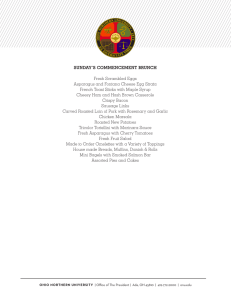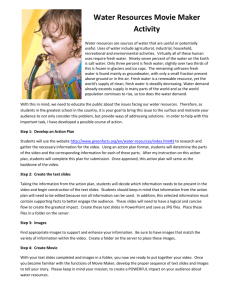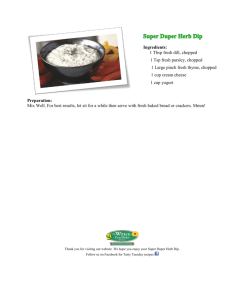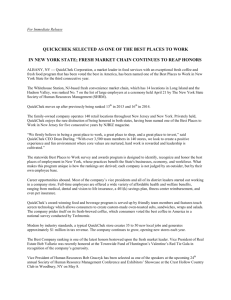The Fantastic Future of Fresh
advertisement
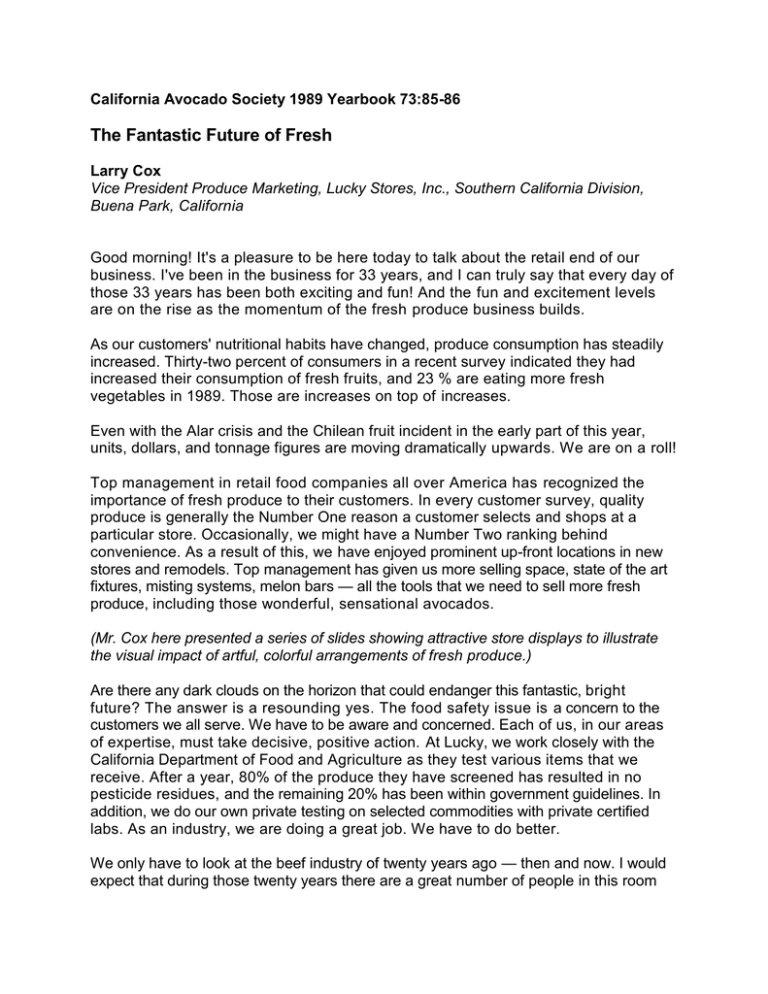
California Avocado Society 1989 Yearbook 73:85-86 The Fantastic Future of Fresh Larry Cox Vice President Produce Marketing, Lucky Stores, Inc., Southern California Division, Buena Park, California Good morning! It's a pleasure to be here today to talk about the retail end of our business. I've been in the business for 33 years, and I can truly say that every day of those 33 years has been both exciting and fun! And the fun and excitement levels are on the rise as the momentum of the fresh produce business builds. As our customers' nutritional habits have changed, produce consumption has steadily increased. Thirty-two percent of consumers in a recent survey indicated they had increased their consumption of fresh fruits, and 23 % are eating more fresh vegetables in 1989. Those are increases on top of increases. Even with the Alar crisis and the Chilean fruit incident in the early part of this year, units, dollars, and tonnage figures are moving dramatically upwards. We are on a roll! Top management in retail food companies all over America has recognized the importance of fresh produce to their customers. In every customer survey, quality produce is generally the Number One reason a customer selects and shops at a particular store. Occasionally, we might have a Number Two ranking behind convenience. As a result of this, we have enjoyed prominent up-front locations in new stores and remodels. Top management has given us more selling space, state of the art fixtures, misting systems, melon bars — all the tools that we need to sell more fresh produce, including those wonderful, sensational avocados. (Mr. Cox here presented a series of slides showing attractive store displays to illustrate the visual impact of artful, colorful arrangements of fresh produce.) Are there any dark clouds on the horizon that could endanger this fantastic, bright future? The answer is a resounding yes. The food safety issue is a concern to the customers we all serve. We have to be aware and concerned. Each of us, in our areas of expertise, must take decisive, positive action. At Lucky, we work closely with the California Department of Food and Agriculture as they test various items that we receive. After a year, 80% of the produce they have screened has resulted in no pesticide residues, and the remaining 20% has been within government guidelines. In addition, we do our own private testing on selected commodities with private certified labs. As an industry, we are doing a great job. We have to do better. We only have to look at the beef industry of twenty years ago — then and now. I would expect that during those twenty years there are a great number of people in this room who reduced consumption, or who took beef out of their diet. It could happen to us. We have to hit the food safety issue head on by reducing pesticide and synthetic fertilizer use, and by telling our customers our positive message in a clear, concise fashion. What else is ahead in the fantastic future of fresh? 1. More growers of more commodities are moving in a positive direction n regard to better flavor and eating quality. Retailers are changing handling programs to manage more mature fruit. Smarter retailers across America are moving to increased deliveries to their stores. At Lucky, many of our stores receive six day deliveries. It's very costly, but we believe it's worth the expense. 2. Yesterday's variety items are volume items today. Items such as Gala and Fuji apples, seedless watermelons, kiwifruit, and La Rouge Royale bell peppers are all big dollar producers for our industry. 3. We will see the emergence of "cut 'n ready" and microwaveable fresh produce because of the demand of customers who are time conscious. 4. We will continue to improve in our ability to provide clear, concise consumer information at point of sale. At Lucky, we have developed a "Smart Eating" monthly brochure chock full of nutritional information such as vitamin content, fiber, and commodity insights. We have recently expanded this to other departments in the store. 5. And in the '90s, retailers will do a better job of taking care of the various ethnic and economic groups we serve. At Lucky, we have a neighborhood store concept in which we hold consumer focus panels to determine how we can serve that neighborhood better. 6. As I mentioned in the beginning, it's been 33 years of fun and excitement. The next decade will be the most fun of all, as we enter the decade of fresh produce. Thanks for all your attention this morning! Mr. Cox responded to questions from the floor, including inquiries about retail margins (on average for avocados, reasonable, he replied—greater when the retail price is low, smaller when price is high) and organic foods (there is some demand, he replied; there are also some problems).



